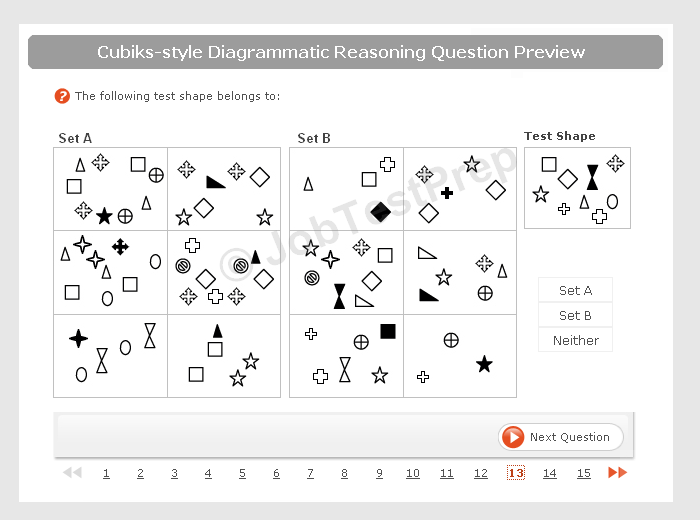How Accurate Are Paternity Tests?
Table of Content
- How Accurate Are Home DNA Paternity Tests?
- Paternity tests – How do they work and how accurate are they?
- Home DNA test vs. Clinic: Things to Consider
- Why a Home Paternity Test Can Never Result in a 100% Probability of Paternity
- Non-Invasive Prenatal Paternity (NIPP)
- How is a DNA paternity test performed?
This means they can refute a paternal biological relationship beyond any doubt. This test can be performed as early as the 8th week of pregnancy. The accuracy of the test is 99.9% and recommended by the American Pregnancy Association. If the woman was pregnant recently, there may be fetal cells in the systemic circulation that may invalidate the test results. Although invasive and only to be carried out with a doctor’s consent, risks of miscarriage is considered less than 1%. This test can be performed in the second trimester, between the weeks of pregnancy.

They are useful to people who are unsure of who their fathers are. Gain legal rights to child support, child custody, Social Security benefits and inheritance. Our procedures test for 22 genetic markers and the gender identification marker amelogenin. It is legally required by the government to investigate any child born outside the one-child policy before a birth certificate is issued.
How Accurate Are Home DNA Paternity Tests?
This is the most accurate prenatal paternity test that is non-invasive. The process is based on analysis of free-floating DNA from the fetus found in the mother’s bloodstream. This test requires only a simple blood sample collection from the mother, and a blood draw or cheek swab from the alleged father. In paternity testing, according to the genetic systems analyzed, the calculation of theprobabilityof paternity results is generally 99.99% or higher for inclusion. If a man is determined not to be the biological father, then a 0% probability of paternity would be 100% accurate for a chain-of-custody test. DNA paternity testing involves collection of a DNA sample from a child and the potential father.
This genetic material is derived from the DNA of both parents. Half the DNA is inherited from the biological mother and the other half from the biological father. First, samples of DNA from the child and the potential father are collected. By analyzing the results, the probability of parentage is determined. Although this type of accurate paternity test requires on-site testing, our network of paternity-testing collection sites makes the process easier.
Paternity tests – How do they work and how accurate are they?
Each biological parent donates one of their two ABO alleles to their child. Blood type A constitutes at least one copy of the A allele, but they could have two copies. It cannot confirm a biological relationship like fatherhood.

If you are looking for answers immediately, it may be a good idea to find a laboratory that will send you the results rapidly. On the other hand, other labs can take weeks to give you the results back. If a woman chooses to have the testing performed while she is pregnant, there are two different procedures.
Home DNA test vs. Clinic: Things to Consider
Experts can then use the mother’s blood to perform a fetal analysis, allowing them to see whether the father and the child share any DNA. These non-invasive tests are safer for the baby and less invasive for the mother. This test will involve taking tissue from a woman’s placenta. Because the DNA is taken from the fetus, invasive tests yield incredibly accurate results. To get these samples, you will need to rub a cotton swab on the inside of the mouths of both the child and the alleged father. It may take several weeks to get results from prenatal paternity tests like CVS and amniocentesis.

The accuracy of an at-home test will be featured on the product’s packaging. Cleveland Clinic’s Ob/Gyn & Women’s Health Institute is committed to providing world-class care for women of all ages. We offer women's health services, obstetrics and gynecology throughout Northeast Ohio and beyond. You’ll pay more — up to $500 — for a legal test in a medical setting.
Why a Home Paternity Test Can Never Result in a 100% Probability of Paternity
These tests look for genetic matches between the potential father and child. Genetic testing services follow strict and validated procedures for processing samples to guarantee the utmost care of your samples. DNA testing is by far the most accurate way of determining biological relationships between individuals. The accuracy percentages of all modern tests range from90%to99.99%, meaning there is room for error, but it’s so small it’s basically irrelevant.

DNA Direct analyzes 22 DNA markers, which is more than many competitors. With that information, the test can rule out a parent with 100% accuracy. The DNA of the mother isn’t needed for the test, but it can be added to the analysis for roughly $25, which makes the testing more accurate in some cases. Trusted, legal and at-home DNA paternity testing kits since 1995. The test results hold a father delinquent in paying child support accountable or can prove he is the father and, therefore, eligible for parenting rights.
If you eat before sample collection, brush your teeth or drink anything but water, the sample can get contaminated and compromise the entire test. Each DNA testing facility is a combination of laboratory equipment and laboratory technicians. The best situation for your testing is the latest in technology that can deliver the very most accurate analysis AND the most highly trained scientific staff. You’re putting your trust in the results of the DNA test, so it’s critical that you’re confident in the laboratory that’s running your test.

“Who is the father of the child” and “who is my biological father” are questions that arise often, not only in plots for movies and novels, but in courts or simply for peace of mind. Paternity tests offer answers to these questions with scientific evidence. It is a measure of the strength of the genetic evidence presented in the report. Many At-Home DNA paternity test kits sold at CVS and other retail stores oftentimes do not disclose the additional fee to have you have to pay to test your DNA samples.
If you want the most peace of mind possible from an at-home paternity test, My Forever DNA is the test for you, as it tests 24 DNA markers, more than many competitors. We also love that My Forever DNA uses an American lab that is accredited by the American Association of Blood Banks, giving it an added level of legitimacy. Overall, DNA Direct provides affordable, accurate, and easy-to-use test kits that make it our choice for the best at-home paternity test. To use an at-home paternity test, you collect DNA samples from the child and the person believed to be the parent. You do not have the hassle of making an appointment to collect buccal cells through an inner cheek swab. The question most often asked is about the accuracy of DNA tests.

It is unethical to test a person’s DNA without their consent. The first thing you will need to do is to obtain an at-home paternity test. Next, you must collect a DNA sample from both the child and the potential father.
Non-Invasive Prenatal Paternity (NIPP)
Restriction Fragment Length Polymorphism is a method that takes advantage of unique DNA patterns in specific regions across an individual’s genome. A large family of proteins known as “restriction enzymes” can identify and cut DNA at these unique sites. As a result, fragments of variable sizes are produced depending on a person’s DNA profile. With advances in DNA testing technology, paternity testing has shifted towards accurate confirmation of paternity rather than simple exclusion.

The only instance that a mother will need to contribute a DNA sample is if you are looking to test the paternity during pregnancy. For more information on this subject, read the paragraph below. These samples will need to be taken from the inside of the cheek. To ensure that these legal tests are completely legitimate, they will be done in a medical setting.
Comments
Post a Comment